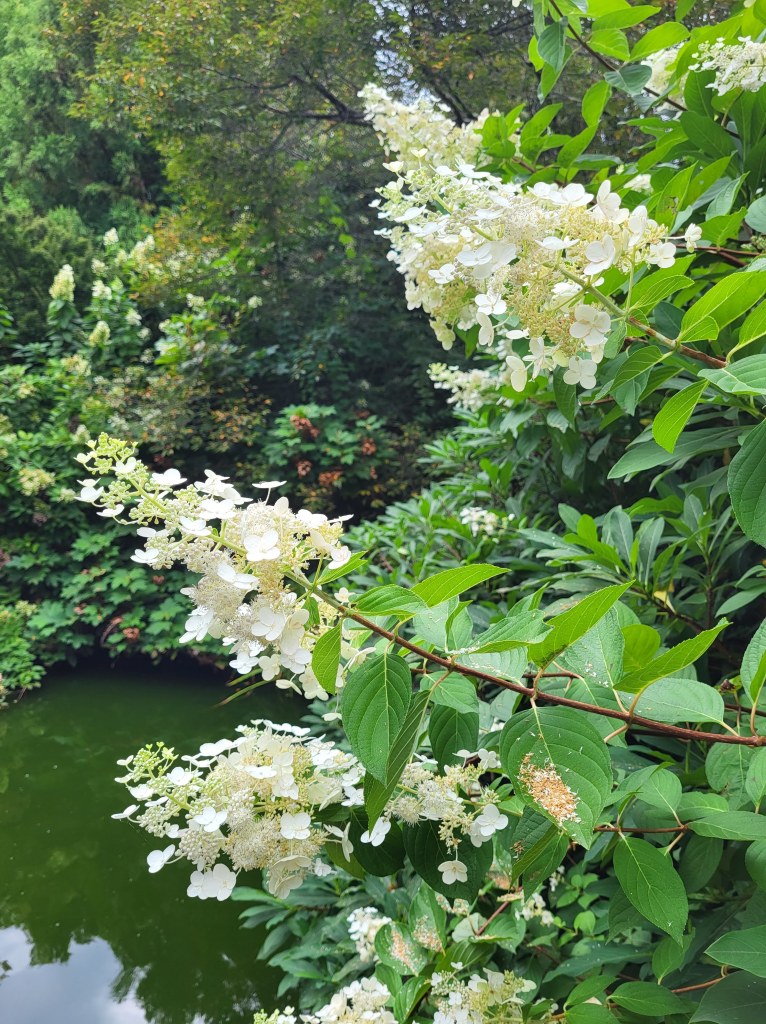I’m too old to change my ways, I thought, but salvias brought me around. While I strive to fill every inch of open ground, my goal is to do a minimum of labor in maintaining the garden. More area covered by plants results in fewer weeds and less work and eliminates the need for mulch (other than fallen leaves left in place to decay). Until recent weeks, I have avoided removing fading flowers, not just of salvias but everything, figuring the return was not worth the effort. I’m quite certain I was incorrect, but that’s changing.

I argued, so what if the salvias don’t flower again, there are other blooms in the garden. Why should I bother deadheading to encourage more? And while I rarely plant annuals, I recently planted a salvia, ‘Black and Blue’. Bees love it, so do hummingbirds, and I planted it in a prominent spot. So, why would I want only a few weeks of color out of this simple to grow salvia? Deadheading takes seconds, and a few days later the bees and butterflies are back.

No doubt, there will be limits to my deadheading. I do not plan on removing faded blooms that do not bring on a new set of flowers. If the concern is the appearance of browned blooms, I don’t care. Brown, faded mophead and oakleaf hydrangea flowers don’t bother me. They’ll be pulled off before spring, though a few of the new introductions tout quick rebloom if flowers are deadheaded, so I might give these a try.
This persistent drought has me considering dragging the hoses around to water this parched garden. With some shade to all parts of the garden there are surprisingly few plants that look to be having problems, but the next rainfall is at least a week away. It’s been weeks since the garden has had significant rainfall, and while I’ve watered the few new plantings and containers that sit on the patios, nothing else has had more than a few drops of rain as storms brush past.

Typically, the summer months have the highest rain accumulation with regular thunderstorms that might drop an inch or two of rain in a short period. Much of this runs off, not soaking into the soil, but when the ground is as dry as it is today it takes a slow, steady rain to saturate the soil. Oh well, my cursing as storms veer to miss the garden does no good, and I am quite pleased at the resilience the garden is showing. I see the stress, but it’s far from the disaster it could be.